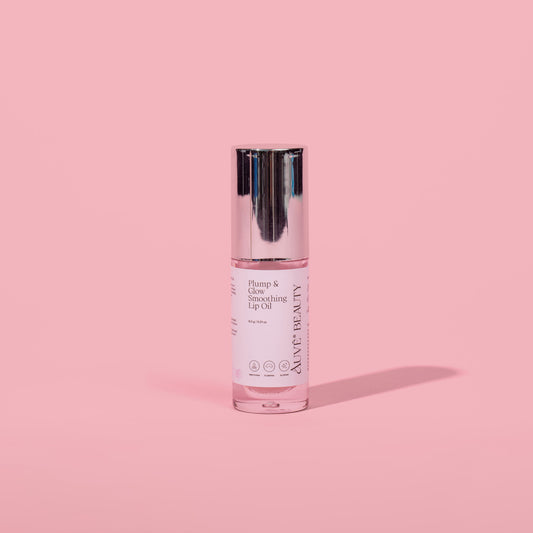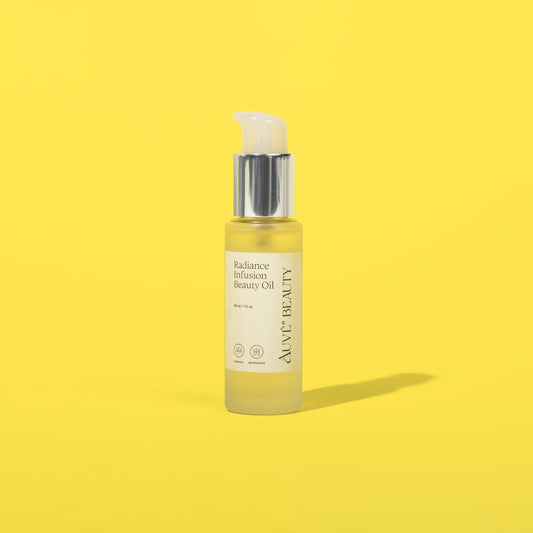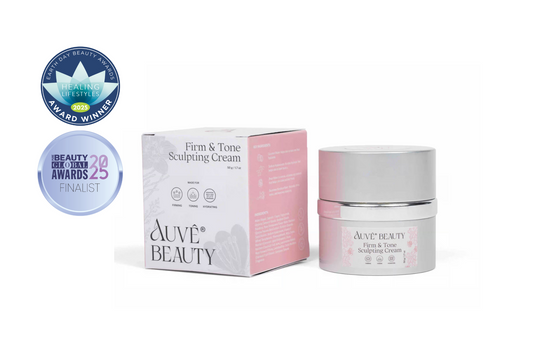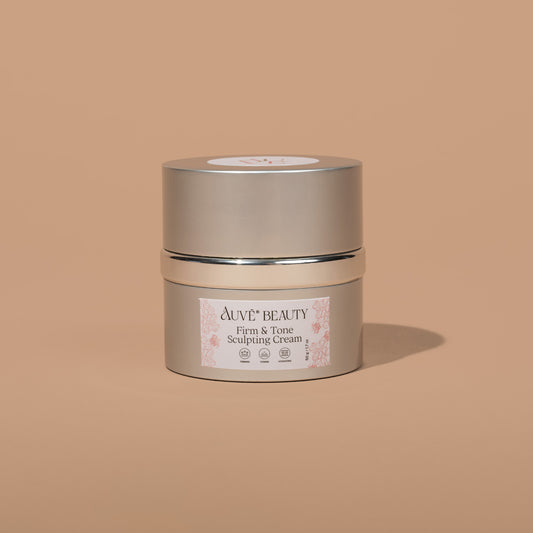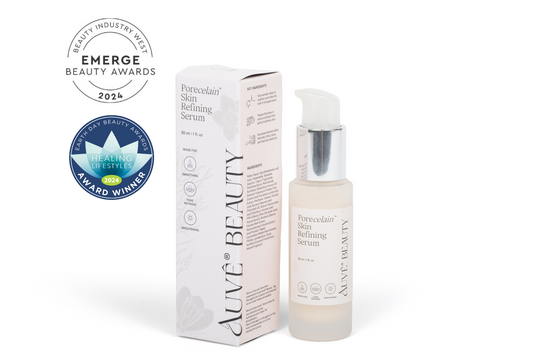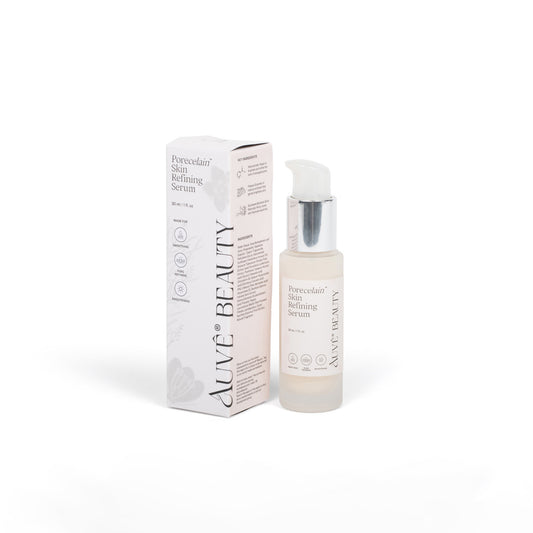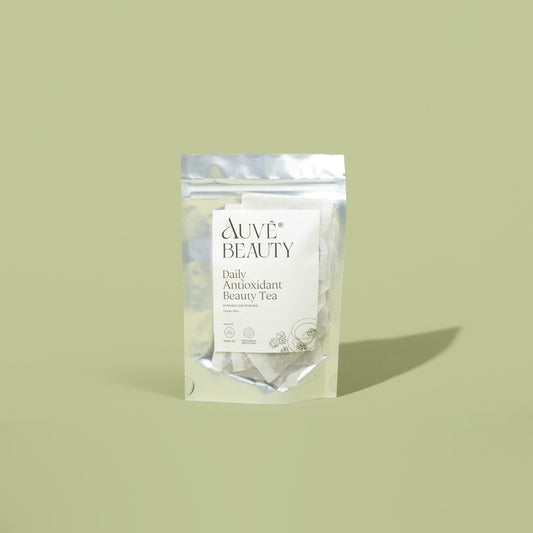
Chemistry Fundamentals
At Auvê® Beauty, we believe that skincare should be informative, transparent, and simple.
We hope to offer a straight-forward approach to provide you with information in a clear and simple way, making it easier to find and learn about skincare!
APPEARANCE
This characteristic self-explanatory! It is important to know what appearance you can expect when you open your products fresh. If the appearance drifts away from expected, it could be a sign of a physical or chemical change.
AROMA
Aromas can vary across the board in skincare, from no aroma, to strong synthetic, to subtle natural aromas. When you see “natural aroma” listed on a product, this means the ingredient is constructed with natural raw materials like isolates (chemicals that have been naturally isolated from a botanical), essential oils and resins
PH
The pH indicates how acidic or alkaline (basic) something is, with a higher pH being more basic and a lower pH being more acidic. You want to look for skin-care products with a pH of 5.5. More acidic products can be as low as 4.5, and neutral as high as 7, Keep in mind, the pH characteristic only pertains to products containing water.
BASE
Water-based skincare products are, just as the name implies, composed mainly of water rather than oils. As such, while the main ingredient in these products is water, the other ingredients will be water-soluble. On the other hand, oil-based products are mainly composed of oils, with many different oils that can be used in an oil-based product. An oil-in-water emulsion is a mixture in which an oil is dispersed in water or other liquid. Small droplets of oil are dispersed in water to create this oil-in-water emulsion. If oil is dispersed in water, it is an oil-in-water emulsion; if water droplets are added to oil, it is a water-in-oil emulsion.
TEXTURE
There are many different skincare textures – these different consistencies are carefully formulated to help your skin absorb the active ingredients and enhance their efficacy.
FORMAT
Skincare product format refers to the physical form or presentation of a skincare product. It describes the specific way in which the product is formulated, packaged, and applied to the skin. The format of a skincare product can vary, and each format offers unique benefits and characteristics.
Here are some common skincare product formats:
Cream: Creams are thick and emollient formulations with a smooth and creamy texture, making them easy to spread and absorb into the skin. Creams are commonly used as moisturizers, providing hydration and nourishment to the skin.
Lotion: Lotions have a lighter consistency compared to creams. They are easily spreadable and absorb quickly into the skin.
Serum: Serums are lightweight, concentrated formulations that contain a high concentration of active ingredients targeting specific skin concerns. Serums are typically applied before moisturizers to deliver potent ingredients deep into the skin.
Gel: Gels have a jelly-like consistency and are often transparent or semi-transparent. They are lightweight and easily absorbed into the skin. Gels are commonly used for hydration, soothing, and cooling effects, making them suitable for oily or acne-prone skin.
Oil: Facial oils are formulated with plant-based oils, such as jojoba, argan, or rosehip oil. They can be either pure oils or oil blends that provide nourishment, hydration, and can help balance the skin's natural oil production.
Mask: Masks come in various forms, such as creams, gels, clays, or sheet masks. They are applied to the skin for a specific period and then rinsed off or peeled away. Masks are used to target specific concerns, such as hydration, brightening, or deep cleansing, and offer intensive treatment benefits.
Balm: Balms have a semi-solid consistency and are often packaged in jars or tubes. They have a thicker texture and are typically used for targeted application, such as lip balms or healing balms for dry or irritated skin.
Each format has its own unique characteristics, textures, and application methods, catering to different skincare needs and preferences. It's important to choose a format that suits your skin type and concerns to effectively incorporate it into your skincare routine.
FINISH
The term "product finish" refers to the final appearance or effect that a skincare product imparts on the skin after application. It describes the visible or tactile result that can be observed or felt on the skin's surface.
Here are some common skincare product finishes:
Matte: A matte finish refers to a smooth, non-shiny appearance on the skin. This finish is commonly desired for individuals with oily or combination skin types.
Dewy: A dewy finish creates a fresh, luminous, and slightly glossy appearance on the skin. It gives the skin a healthy, natural glow and radiance. This finish is popular for individuals seeking a youthful and radiant complexion.
Satin: A satin finish offers a balanced appearance between matte and dewy. Skincare products with a satin finish aim to provide hydration and a subtle luminosity while maintaining a refined and natural appearance.
Radiant: A radiant finish refers to a bright, luminous, and lit-from-within glow on the skin. Skincare products with a radiant finish often contain light-reflecting particles or ingredients that enhance the skin's radiance and give it a more youthful and vibrant appearance.
Understanding the desired finish of a skincare product can help you choose products that align with your desired skin appearance and overall aesthetic goals.


